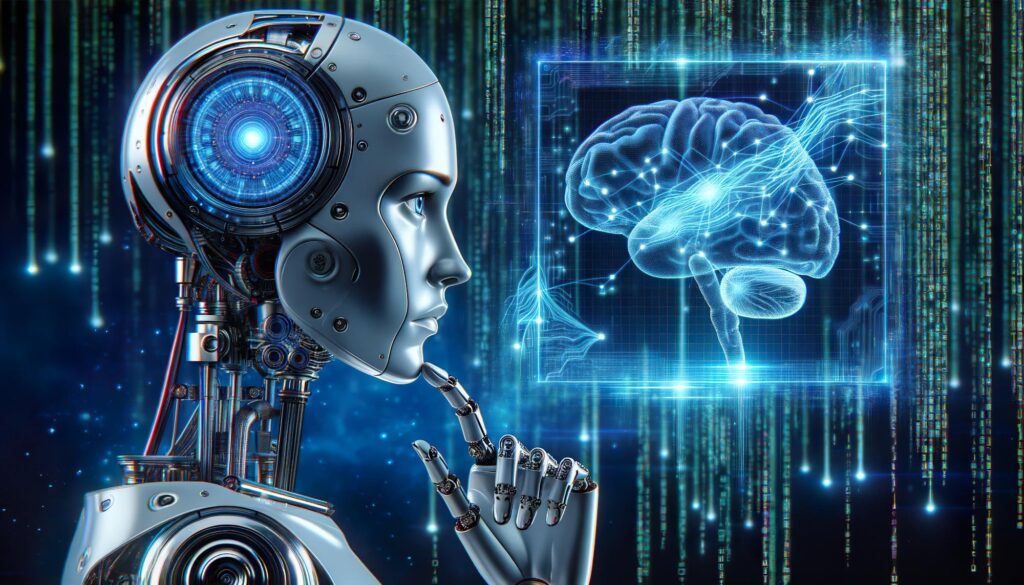Table of contents
ToggleIntroduction
AI agents are no longer just experimental code buried in obscure GitHub repositories. They’re here, they’re working, and they’re already transforming industries from software development to finance. Built on the foundation of large language models (LLMs), connected to real-time data streams, APIs, and decision-making logic, these autonomous systems can perform tasks, learn from feedback, and even collaborate with other agents—without constant human supervision.
In 2023 and 2024, tools like Auto-GPT, AgentGPT, and Devin brought the concept of autonomous AI into the mainstream. The buzz quickly moved from niche developer forums to boardrooms and VC pitch decks. Companies across sectors began asking: How can we use AI agents to streamline operations, reduce costs, and stay ahead of competitors?
Whether it’s automating complex workflows, conducting in-depth market research, or acting as virtual software engineers, AI agents are redefining what it means to “get work done.” For finance professionals and tech innovators alike, understanding how these agents function—and why they matter—is no longer optional. It’s essential.
In this article, we’ll break down what AI agents are, why they’re making headlines, and what their rise means for the future of technology and finance. Welcome to the age of autonomy.
I. Understanding AI Agents: The Basics
As artificial intelligence evolves from passive assistants to active problem-solvers, a new class of tools has emerged: AI agents. These systems are designed to think, plan, and execute tasks on their own, marking a leap forward from earlier generations of automation. But to grasp why this shift is so revolutionary, we first need to understand what AI agents are, how they operate, and the different forms they take.
1. Definition and Origins
At its core, an AI agent is a system capable of perceiving its environment, reasoning about it, and acting autonomously to achieve a goal. This makes it fundamentally different from traditional AI tools like chatbots or recommendation engines, which follow fixed rules or operate within tightly defined parameters.
The idea of an “agent” comes from fields like robotics, computer science, and cognitive science, where systems are designed to exhibit goal-directed behavior. But it wasn’t until the rise of large language models (LLMs) like OpenAI’s GPT or Google’s Gemini that AI agents gained the capability to understand complex instructions, learn from feedback, and adapt dynamically.
Before 2023, most AI was reactive: it responded to input but didn’t take initiative. Now, with the integration of LLMs, memory, and API access, AI agents can proactively plan multi-step tasks—just like a human assistant might. This evolution is why you’ll often hear AI agents referred to as “autonomous agents” or “agentic systems.”
2. How They Work
AI agents are built on a modular architecture that enables them to process input, make decisions, and act on them. While implementations vary, most agents include four key components:
- Perception Layer: This involves input from the environment—text prompts, web data, APIs, or even sensor data. It allows the agent to understand the current state of the world.
- Cognitive Engine: This is usually powered by an LLM (like GPT-4 or Claude), and it enables the agent to interpret information, reason, and plan next steps.
- Memory & State: Many agents maintain short-term and long-term memory, storing prior actions, user preferences, or past failures to inform future decisions.
- Action Interface: Agents must interact with the world—by calling APIs, writing files, triggering code, or communicating with users or other agents. This execution layer is what turns thought into action.
Together, these elements form a loop: the agent observes, thinks, acts, and learns. What distinguishes agents from simpler AI systems is this autonomy: they don’t need constant prompts. You can give an agent a high-level goal—“Research the best SaaS pricing strategies and write a report”—and it can break it into subtasks, search for information, write drafts, and revise, all independently.
This is often described as a “closed-loop” or “goal-oriented” system. It’s not just reactive—it’s proactive.
3. Types of AI Agents
AI agents come in various shapes and sizes, depending on their level of autonomy, purpose, and complexity. Here’s a look at some major categories:
- Reactive vs. Proactive Agents
- Reactive agents respond to specific triggers, like a Slack bot that sends alerts when a metric is breached.
- Proactive agents initiate tasks on their own—like an agent that scans financial news daily and updates your investment dashboard.
- Single-Agent vs. Multi-Agent Systems
- Some setups involve one agent handling a range of tasks.
- Others involve multi-agent systems, where multiple specialized agents collaborate—like one focused on data gathering, another on analysis, and a third on reporting.
- Open-Source vs. Proprietary Agents
- Tools like Auto-GPT, AgentGPT, and BabyAGI have popularized open-source experimentation, letting developers run agents locally or in the cloud.
- Meanwhile, Devin by Cognition and other proprietary agents are being built for enterprise-grade deployment in software development, finance, and operations.
These categories aren’t rigid. Many real-world applications blend aspects of each. What unites them all is the shift toward systems that don’t wait for your every command—they anticipate needs, plan actions, and execute with minimal oversight.
Up next, we’ll explore why AI agents are making such a massive impact in sectors like technology and finance, and why they’re seen as more than just a passing trend.
II. Why AI Agents Are Disrupting Tech and Finance
The rapid rise of AI agents isn’t just a trend within tech circles—it’s a seismic shift in how work is executed across industries. In particular, sectors like technology and finance, which thrive on speed, data, and efficiency, are at the forefront of adoption.
What makes AI agents so disruptive is their ability to replace or enhance cognitive labor, not just automate repetitive tasks. From writing code to managing portfolios, these agents are starting to perform functions once reserved for skilled professionals. Let’s explore how they’re being used today—and why it matters.
1. Use Cases in the Tech World
In the world of technology and software development, AI agents are rapidly changing the game. While LLMs like ChatGPT already help developers brainstorm and debug, AI agents go further by executing full tasks autonomously.
Here are some of the most impactful use cases:
- Autonomous Software Development
The release of Devin, the AI software engineer by Cognition, showed the world what’s possible when an agent is given the tools to build, test, and deploy code end-to-end. Devin can set up environments, track bugs, write documentation, and even push changes to GitHub—all without human intervention. - Workflow Automation & Integration
Agents are being used to orchestrate multi-step workflows across systems. For instance, a customer support agent might read incoming emails, classify issues, retrieve customer data, and trigger resolution scripts—completing what used to take a team of people. - Productivity Agents for Teams
Agents like SuperAGI or CrewAI can work alongside human teams to conduct research, send updates, summarize documents, or monitor KPIs. This creates “agent-augmented teams” where humans focus on decision-making, and agents handle the heavy lifting.
In short, tech companies are leveraging agents not just to boost productivity, but to redefine how software itself is built and managed.
2. Impact on the Financial Industry
Few industries are as information-intensive and time-sensitive as finance—and that makes it fertile ground for AI agent deployment. (“Agentic AI in financial services”)
Here’s how AI agents are already making an impact:
- Market Research and Reporting
Agents can monitor global financial news, extract relevant data, and generate custom reports. For instance, a wealth management firm could deploy an agent to track updates on central bank decisions, earnings releases, or geopolitical risks, and tailor insights for clients. - Automated Portfolio Management
In algorithmic trading and asset management, agents can act as autonomous quants: running simulations, analyzing market conditions, rebalancing portfolios, and executing trades in real-time. While not fully autonomous in high-stakes environments (yet), they are increasingly used for prototyping strategies. - Compliance and Risk Monitoring
AI agents can comb through transaction logs, flag anomalies, and cross-reference them with regulations—helping compliance teams catch potential violations early. This application is growing in areas like anti-money laundering (AML), fraud detection, and internal audit.
By freeing up analysts, traders, and compliance officers from tedious or repetitive tasks, agents help firms focus on strategic decision-making and client relationships—critical differentiators in today’s competitive financial landscape.
3. Efficiency and Cost Revolution
One of the most immediate benefits of AI agents is cost-efficiency. Unlike traditional automation tools that require intensive configuration and maintenance, AI agents can be deployed faster, adapt on the fly, and perform multi-step cognitive tasks with minimal supervision.
Key operational advantages include:
- Time Savings
Agents can work 24/7, multitask without fatigue, and execute complex workflows in seconds or minutes rather than hours. For example, what once took a team a full day—like collecting KPI data, analyzing it, and formatting a report—can now be completed overnight by an agent. - Reduced Need for Human Intervention
Rather than building rigid automation systems, companies can use agents that understand natural language instructions. This reduces the need for extensive scripting, manual approvals, and cross-team dependencies. - Scalability
AI agents scale effortlessly. Need to monitor 1,000 customer interactions per hour instead of 100? Spin up more agents or give a single agent broader access. The marginal cost of scale is drastically lower than hiring more human staff.
In many ways, the rise of AI agents mirrors the cloud revolution: they offer flexibility, speed, and scalability at a fraction of the cost of traditional models. For startups, this means doing more with leaner teams. For large enterprises, it means rethinking legacy systems and workflows to unlock new levels of performance.
In the next section, we’ll address the other side of the coin: the challenges, risks, and future outlook for AI agents—because while the potential is massive, the road ahead is far from smooth.
III. Challenges, Risks, and the Future of AI Agents
As promising as AI agents are, their rapid rise has also raised red flags—technical, ethical, regulatory, and operational. With every leap forward in capability comes an increase in complexity and risk. These systems are not only powerful, but often opaque, unpredictable, and hard to govern.
In this final section, we’ll examine the major obstacles that lie ahead, the societal and business risks at play, and what the next five years might hold for agentic AI.
1. Technical and Operational Challenges
Despite their appeal, AI agents remain in a nascent stage. Most current models, even the most advanced, exhibit critical limitations that hinder mainstream, high-stakes deployment.
- Reliability and Hallucination
AI agents inherit the same flaws as the LLMs that power them. This includes hallucination—where the agent confidently invents facts or misinterprets instructions. In financial or technical contexts, a single hallucination can lead to serious losses or reputational damage. - Tool and API Fragility
Agents often rely on APIs and third-party tools to operate. A minor change in an endpoint, naming convention, or access permission can break their entire workflow. Unlike human operators, agents can struggle to detect when they’re stuck in a loop or executing outdated instructions. - Memory and Context Limits
While many agents are equipped with short- and long-term memory systems, these are often rudimentary and brittle. Maintaining coherent context over long tasks, or coordinating between multiple agents without interference, remains a major engineering hurdle. - Debugging and Monitoring
AI agents make decisions based on probabilistic models, not deterministic logic. This makes it hard to debug their behavior. Why did the agent choose one approach over another? Did it follow the right logic? The “black box” nature of LLMs complicates auditability and trust.
In short, AI agents still require human oversight, especially in regulated or high-risk environments. The dream of a fully autonomous digital workforce remains aspirational—for now.
2. Ethical and Regulatory Concerns
The deployment of AI agents also raises serious ethical and legal questions. These aren’t just philosophical debates—they have real consequences for businesses, employees, and consumers.
- Autonomy vs. Accountability
Who is responsible when an AI agent makes a harmful or biased decision? Is it the developer, the deployer, the user, or the model provider? As agents gain more autonomy, lines of accountability blur. - Bias and Discrimination
If an AI agent is used to assess creditworthiness, scan resumes, or recommend investments, how do we ensure it’s fair and unbiased? Many LLMs are trained on large, uncurated datasets that reflect societal biases—and agents may replicate or even amplify them. - Transparency and Consent
Users often don’t know when they’re interacting with an autonomous agent rather than a human. Should agents always disclose their nature? And how can individuals consent to decisions made by AI systems acting on their behalf? - Regulatory Lag
While the EU’s AI Act and other emerging frameworks aim to regulate AI use, they often lag behind technological development. Companies must navigate a moving regulatory target, balancing innovation with compliance and reputational risk.
There is growing consensus that agentic systems will require new governance models, including internal AI ethics boards, third-party audits, and clear usage guidelines—especially in finance, healthcare, and legal sectors. (“Forget Chatbots. AI Agents Are the Future”)
3. What’s Next?
Despite these challenges, the future of AI agents is incredibly dynamic. The trajectory of development suggests that agents will become more capable, collaborative, and personalized in the years ahead. Here are some key trends to watch:
- Agentic Workflows as a Norm
Instead of single-use tools, we’ll see companies designing entire agentic workflows, where agents handle planning, execution, and review. For example, a financial services firm might use a chain of agents to generate client insights, personalize reports, and schedule follow-ups. - Multi-Agent Collaboration
Inspired by ideas from swarm intelligence and distributed computing, future systems will use teams of agents that specialize in different tasks and coordinate via shared memory or protocols—much like human departments. This will vastly increase scale and complexity. - Personal and Embedded Agents
We’re moving toward a future where everyone—from executives to interns—has their own personal AI agent, trained on their data, preferences, and work habits. These agents will not only save time but also learn and evolve in tandem with the user. - Domain-Specific Agents
Just like we have industry-specific SaaS tools, we’ll see finance-focused, legal-focused, or healthcare-focused agents with fine-tuned models, secure data access, and regulatory safeguards built-in. - Tighter Human-AI Integration
Rather than replacing humans, agents will likely become collaborative partners—enhancing creativity, accelerating analysis, and freeing humans to focus on strategic decisions. The future is less about man or machine, and more about augmented collaboration.
Ultimately, AI agents represent more than just a technical advancement—they’re part of a new operating paradigm for work, where autonomy, intelligence, and adaptability are built into the digital fabric of organizations.
Conclusion
AI agents are not just the next step in automation—they represent a paradigm shift in how tasks are executed, decisions are made, and value is created in the digital economy. Their ability to operate autonomously, learn dynamically, and interact with complex environments gives them an edge over both traditional AI tools and legacy software systems.
In technology, they’re changing how software is built, deployed, and maintained. In finance, they’re transforming how professionals gather intelligence, manage portfolios, and ensure compliance. Across sectors, they’re enabling leaner operations, faster decisions, and scalable solutions that were previously unimaginable.
Yet, with such power comes new risks. Technical limitations, hallucinations, regulatory gray zones, and ethical concerns must be addressed head-on. The deployment of AI agents calls for vigilance, governance, and thoughtful design to ensure that these systems serve human interests—not subvert them.
What’s clear is this: we’re entering a future where humans and agents will work side by side. Those who learn to collaborate with AI—not just use it—will gain a decisive edge in creativity, productivity, and strategy.
If you’re a tech leader, a finance professional, or simply someone navigating the digital landscape, now is the time to understand, experiment with, and prepare for this new generation of AI. Because the age of agents isn’t coming—it’s already here.





